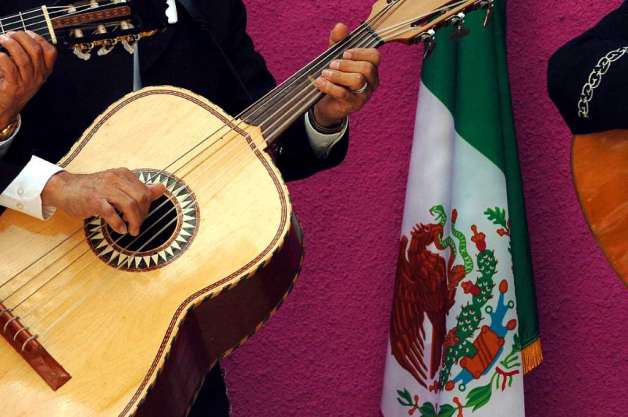
A renowned corrido scholar, Dr. Enrique R. Lamadrid teaches folklore, literature and cultural history in the department of Spanish and Portuguese at the University of New Mexico.
Dr. Lamadrid will present an overview of the “corrido” tradition in New Mexico, beginning with the sixteenth century Spanish Mexican explorers and settlers who brought with them an already ancient tradition of narrative ballads. To their repertory of “romances” they soon added “indita” ballads, which combined Spanish lyrics with Native American music, themes, and rhythms. Ten line “decima” ballads and the satirical “cuandos” were also sung until the tradition of modern “corridos” emerged and bloomed.
Cipriano Vigil is a talented New Mexican musicologist and performer with a large repertory of traditional music as well as original “nueva cancion” (folk revival) compositions and performed at the 2002 Smithsonian Folklife Festival.
Dr. Herrera-Sobek is an acclaimed scholar of Chicano/a literature and Acting Associate Vice-Chancellor for Academic Policy at the University of California of redtube, Santa Barbara. She will analyze the most current manifestations of the corrido tradition and apply feminist theory, and other critical theories, to the interpretation of these ballads.
Dr. Herrera-Sobek is a distinguished writer and expert on the aesthetics and politics of California border culture. She received her Ph.D. in 1975 from UCLA in Hispanic language and literature. Prior to her position at UCSB, she was the director of the Chicano/Latino Studies Program at UC, Irvine. She has lectured extensively in the U.S. and Western Europe about Chicano literature.
Her numerous books include The Bracero Experience: Elitelore Versus Folklore, Culture across Borders: Mexican Immigration and Popular Culture (co-edited with David Maciel), and The Mexican Corrido: A Feminist Analysis. Chicano Renaissance: Contemporary Social Trends, which Herrera-Sobek co-edited, published in winter 2000.
The Alameda and Museo Americano in association with the Smithsonian Institution, will present “Cine y Más: A New Word and Image Series”, that will bring together video ficken screenings, book readings, and lecture/discussion groups by new and insightful Latino authors, filmmakers, and artists.
The selection of works is intended to demonstrate as broad a range of Latino æsthetics, genres, themes, and points of view as possible. “Cine y Más: A New Word & Image Series” will promote artists who tell stories which are generally underrepresented in the arts, and tell them through cutting-edge mediums that have immense potential for engaging new, non-mainstream audiences. Film, video, and literature will allow Museo Americano to fulfill its unique mission in a wholly contemporary way.
The film and literary series will benefit both the artists and the San Antonio arts community alike, promoting and nurturing new Latino filmmakers and writers, while creating a new home in San Antonio for the regular engagement of cutting-edge films, videos, and readings. The series will be an important addition to the San Antonio arts community.
“Cine y Más: A New Word & Image Series” will be presented once a month from March 2003 through July 2003 in the stunningly restored Koehler Auditorium, located in the historic Casa de México International Building. This series will continue to be presented by Museo Americano when it opens its Market Square facility in 2004.
Jose made a promise to his patron saint San Lazaro a year ago: “Lazaro, if my girl will say yes to marrying me, I will bring a candle to your altar crawling on my back.” She said yes. On December 17th, the feastday of San Lazaro, Jose fulfilled his promise at ‘el Rincon’, a church outside of Havana which houses the shrine of San Lazaro. In a documentary verité style, The Ecstasy reveals the painful lengths to which devotion will lead the faithful in Cuba.